#Pagan Witch
Text
✨️🫙✨️Spells✨️🫙✨️

#green witch#cottage witch#witchythings#nature witch#witch#witchyvibes#witchblr#witch aesthetic#pagan witch#witch community
84 notes
·
View notes
Text
I feel the need to say something. Whether that's because someone might need to hear it, or I just need to get it written down, I don't know and likely never will. Be warned that this post might come across as a little vent-y despite that not being its purpose.
Moral of this post in case you don't want to read it all; the gods are patient. They are kind. Sometimes, in ways you don't expect.
Currently, I am overthinking something. Badly. I can feel it boiling over, and at first I tried to keep it hidden from Loki because I deemed it cringe or bad. Unlovable in some way. (even though I make a point to never label anyone else cringe, this label is often applied to me when I feel self deprecative.)
Eventually I just gave up, because I figured they'd already seen it, and I admit I vented about it. They sat with me and listened, and I could feel that he's just... Distraught. Horrified that I think this part of me is unworthy of existing. He hates that I won't let him help, either.
But the reason I say that the gods are patient is this; I have yet to do a reading about it. I don't allow much in the means of direct communication when I'm talking about it, because I "could just be imagining it" and no matter what stance they take it's either what I want to hear or what I'm afraid of. Both of which I could see myself imagining.
Loki WANTS to help. I can feel him getting antsy, kind of. I almost finally grabbed my cards to do a reading with him tonight, but I'm too tired right now and, admittedly, I'm procrastinating. This is something I am actively beating myself up about, and Loki could absolutely be cruel. They could be my worst fucking nightmare. I know they won't, logically, but emotions are not often logical.
And yet they wait. They're sitting with me right now, I can feel it- and they're going to give me all the time I need. They're a deity, they have all the time in the world. If this were a human friend, and I had vented about this but not been willing to listen to their opinions, I know damn well I would not be given the time I need to prepare myself for that conversation. But Loki isn't human. So they wait until I can pick up those cards and face the fear head-on.
I'm reminded of someone saying that Loki will push you to be far more than you ever knew you could be. I think that's true. But I also think that there's something to say about how patient they are, just... Letting us grow ourselves, walking alongside us while we're fucking terrified, and understanding that these things don't happen overnight.
#witchcraft#paganism#witchblr#pagan#pagan witch#witch community#deity work#eclectic pagan#paganblr#witch blog#loki#loki deity#norse loki#loki devotee
71 notes
·
View notes
Text
#leopika#conan gray#climate change#boho#Brittany Snow#puerto rico#nge#futurama#pagan witch#ab/dl lifestyle
123 notes
·
View notes
Text
Im bad at witchcraft can i pls just be someone’s familiar
#paganblr#paganism#pagan#hellenic pagan#witchblur#witchblr#pagan witch#witchcraft#witch community#green witch#witchy#pagan wicca#pagans of tumblr#pagan community#familiar#baby pagan
33 notes
·
View notes
Text
Herb Correspondences - S-Z

Sage - Used for self-purification and cleansing. Helps grief and loss. Healing and protection also increase wisdom. Element Air.
Sandalwood - Burn during protection, healing, and exorcism spells. Aids luck and success, meditation and divination. Raises a high spiritual vibration. Element Water.
Skullcap - Aids in love, fidelity and peace. Increases harmony. Element Water.
Sea Salt - Use to cleanse crystals and tools. For purification, grounding and protection. Supports ritual work. Absorbs negativity and banishes evil. Element Earth & Water.
Sheep's Purse - Prosperity, protection and healing. Element Earth.
Sheep Sorrel - Carry to protect against heart disease. Cleansing and increases luck. Use in faery magic. Element Earth.
St. John's Wort - Worn to prevent colds & fevers. Induces prophetic and romantic dreams. Protects against hexes and black witchcraft. Increases happiness. Use in Solar Magic. Element Fire.
Star Anise - Consecration, purification, and happiness. Use for curse breaking or increasing luck. Burn to increase psychic awareness. Element Fire.
Strawberry Leaf - Attracts success, good fortune, and favorable circumstances. Increases love and aids pregnancy. Element Water.
Sunflower - Energy, protection, and power. Aids wisdom and brings about wishes. Use in fertility magic. Element Fire.
Sweet Cicely - Use during rituals for the dead or dying. It helps with divination and the contact of the spirit. It is sacred to the Goddess’ of death. Element Earth.
Sweetwood - See Cinnamon.
Tansy - See Agrimony.
Tarragon - Increases self-confidence. Use in Dragon magic. Aids healing after abusive situations. Element Fire.
Tea Leaves - Use for courage or strength. In tea for increasing lust. Burn leaves to ensure future riches. Element Air.
Thistle - See Blessed Thistle.
Thyme - Attracts loyalty, affection, and love. Increases good luck and psychic power. Drink tea to aid sleep. Element Air.
Valerian - Also called Graveyard dust. Aids sleep is calming and is a sedative. Quietens emotions. Supports protection and love. Element Water.
Vervain - Strengthen other herbs. Helps, peace, love and happiness. Burn the leaves to attract wealth and keep your youth. Increases chastity also. Element Water.
Verbena - Psychic protection, peace and purification. Healing and helps depression. Increases beauty and love. Mind opening and clearing. Ideal use for exams. Element Earth.
Violet - See Heart’s Ease.
White Willow Bark - Use in lunar magic. Reduces negativity and removes evil forces and hexes. Used for healing spells. Element Water.
Willow - Used for lunar magic, drawing or strengthening love, healing, and overcoming sadness. Element Water.
Witches Grass - Happiness, lust, love, and exorcism. Reverses hexes. Element Earth.
Wood Betony - Use for purification, protection, and the expulsion of evil spirits and nightmares. Draws love in your direction. Element Fire.
Woodruff - Victory, protection, and money. Element Air.
Wormwood - Used to remove anger, stop war, inhibit violent acts, and for protection. Use in clairvoyance, to summon spirits, or to enhance divinatory abilities. Element Earth.
Yarrow - Healing, calming and increases love. Used in handfasting & weddings. Increases psychic power and divination. Gives courage when needed. Element Air.
#witch#witchcraft#witchblr#pagan#witches#wicca#pagan witch#paganism#pagan wicca#herbsforspells#herbs#plants and herbs#herbalism#spell work#witch community#spellcraft#witch tips#beginner witch#grimoire
41 notes
·
View notes
Text
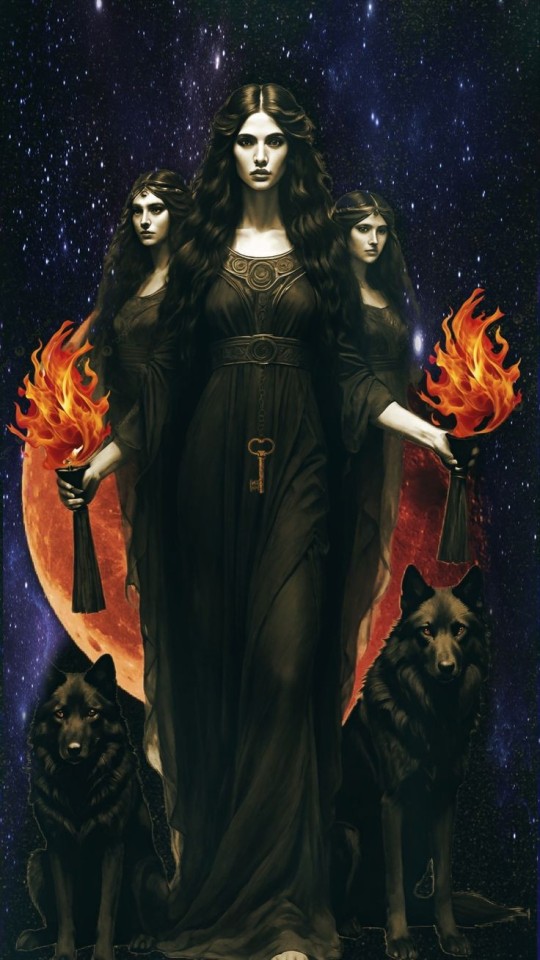
Hekáte, on this Your Full Moon, we rejoice in Your blessings. Mother we thank You for a new cycle and all that it will bring. Goddess Hekáte, Queen of the Moon, let offerings be made in Your name!
#hecate#devotion#pagan#goddess#heal me#healing#gratitude#thankful#paganblr#witchblr#hekáte#hekate#witches#pagan witch#witchcraft
42 notes
·
View notes
Text
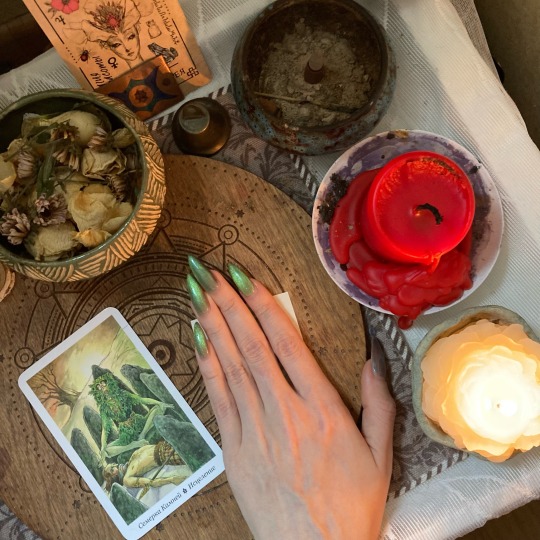
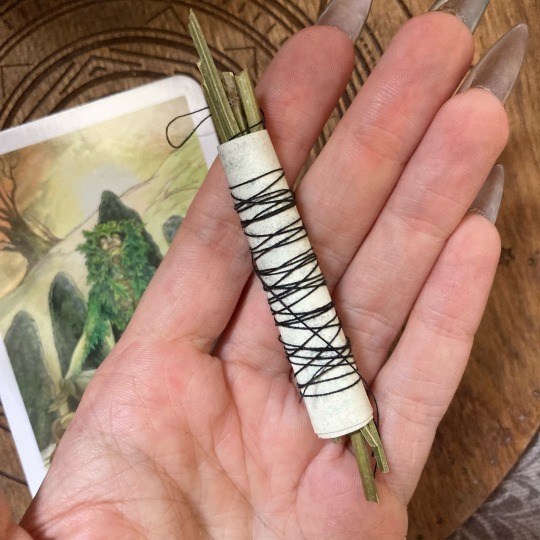

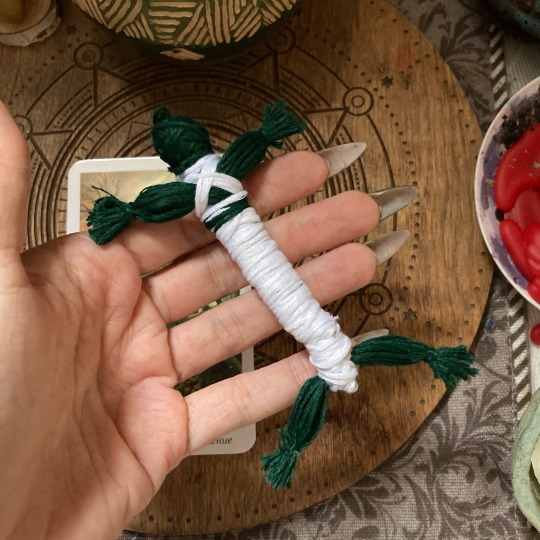


health doll with sigil for my friend 🌱💚
#pagan witch#paganblr#wicca witch#wiccablr#wiccalife#wiccan#witch#witch aesthetic#witchblr#witchcore#witchcraft#witch community#witches#pagancore#pagan wicca#pagan#paganism#green witch
26 notes
·
View notes
Text
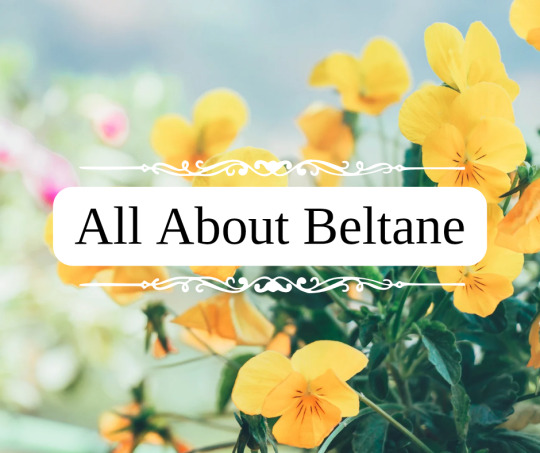
All About Beltane
Beltane, also known as Bealtaine in Irish, is a Gaelic holiday traditionally held on May 1st or the halfway point between the spring equinox and the summer solstice. It is believed to be named after the Celtic sun god Belenus. It was widely observed in Ireland, Scotland, and the Isle Of Man, and is one of the 4 major Celtic fire festivals. It is mentioned in even the earliest Irish literature and marked the beginning of summer and used as the marker to drive cattle into their summer pastures. Although public celebrations have mostly fallen out after the 20th century and many traditions have been mixed with other cultural holidays (such as the Roman holiday May Day), many Celtic Neopagans and Wiccans still celebrate, and many local traditions still continue, causing it to now get a cultural revival.
Traditionally, rituals were held to protect the livestock that moved pastures, along with crops, dairy products, and people, and to encourage growth. It was also important to appease the Aos Sí, or nature spirits/fairies, which were believed to be more active then.
According to early medieval texts in 908, druids would make two bonfires and drive cattle between them to protect them from disease. In the 18th and 19th centuries, bonfires continued to be an important part of the celebrations. Before the bonfires were lit, all hearth fires were put out, and then relit using the fire from the Beltane bonfires after the celebration.
Continuing into the 19th century, cattle were still driven over or between flames, or sometimes around the fires or made to leap over. The people themselves did as well for good luck and protection. Once the fires died down, people would dab themselves with the ashes and sprinkle them over their crops and livestock. Torches from the bonfires would also be brought home and carried around the home or boundaries, and also used to relight the hearth.
Food was also an important part of the Beltane festival, and usually included a feast of lamb, which, historically, was sacrificed. In 1769, it was written that a hot drink, called a caudle, made of eggs, butter, oatmeal, and milk was served, along with tossing a bit on the ground as an offering. A Beltane Bannock, a type of oatmeal cake, was also written to be important and had a few traditions around it.
In one tradition, the Beltane Bannock had nine knobs on it and each person would take the bannock and face the fire, proceeding to break off the knobs of bannock one at a time and tossing them behind their shoulder as an offering to the spirits for protection over their livestock and from predators (one for the cow, one for the sheep, one for the fox, etc). Afterwards, they would drink the caudle.
According to other 18th century writers, there was another Beltane Bannock tradition where the bannock would be cut into slices and one was marked with charcoal. The slices were then thrown into a bonnet and everyone would take one out while blindfolded. According to one writer, whoever pulled the marked bannock slice had to leap through the fire 3 times. According to another, the person would instead be pretend-thrown into the fire and for some time afterward people would talk about the person as if they were dead. This may have always been symbolic, or it may have been a tradition from a time where actual human sacrifice was used. This tradition was also near identical to May Day traditions that occurred in Wales and other parts of Europe, however.
Other traditions including flowers and plants were also observed, especially ones that evoked fire. Documents from the 19th century cite that yellow and white flowers, such as primrose, rowan, hawthorn, gorse, hazel, and marsh marigold was used and placed at doorways and windows. Sometimes they were strewn into garland, and other times they were made into bouquets, made into crosses, or fastened to them. They were also fastened to cows and milking/butter equipment.
Decorating a May Bush or May Bough was also a widespread tradition, and it usually consisted of a small tree or branch (typically hawthorn, rowan, holly, or sycamore) decorated with bright flowers, ribbons, candles, painted shells or egg shells from Easter, and more. In some traditions they also decorated it with gold and silver May Balls, which were hurling balls, that were then either given out to children or gifted to winners of a hurling match. It was also known as the only acceptable time to cut a thorn tree, as they were associated with fairies and may have also been a relic of worshipping tree spirits. It would either be decorated where it grew, or branches hung over windows, doors, roofs, and barns either inside or outside. Traditionally, it was the responsibility of the eldest of the house to decorate it.
The tree was usually left up until May 31st, but in some traditions it would be burned in the festival bonfire after singing and dancing around it. In Dublin and Belfast, May Bushes were brought into town and decorated by the whole neighborhood, with each neighborhood competing for the most beautiful bush. These competitions could also lead to neighborhoods attempting to steal others May Bushes, which eventually led to the May Bush being outlawed in Victorian times.
Appeasing the fairies was also a big part in Beltane celebrations, with many traditions revolving around offerings to the fairies and also warding them off, as there were many fears around them stealing dairy. One protection tradition was to leave 3 black coals under the butter churn. Another was to hang May Boughs on the milk pails. And yet another was to hang cattle tails in the barns. Flowers were also used to decorate the cattle's horns for good luck.
Farmers would also lead a procession around the boundaries of the farm and would "carry with them seeds of grain, implements of husbandry, the first well water, and the herb vervain (or rowan)", stopping at the four cardinal points of direction starting at the east, and performing rituals towards each direction at each stop. These processions were said to bring protection of their farm produce and encourage fertility. Some people also made the sign of the cross using milk on the backside of cattle for good luck.
As for fairy offerings, one tradition was to pour milk or leave food at places associated with the fairies such as "fairy trees". In Ireland, cattle were brought to "fairy forts" where a small amount of their blood was poured into the earth with prayers of the herd's safety. Sometimes, the blood would be left to dry and then be burnt.
Visiting holy wells was also a popular way to celebrate Beltane. Visitors would walk sunwise, moving from east to west, around the well while praying for health. They would then leave offerings of coins or cloth. The first water drawn from the well on Beltane was thought to be especially potent, and would bring good luck to the person who drew it.
Morning dew on Beltane was also thought to bring goodluck and health, and maidens would wash their face with it or roll in it at dawn or before sunrise on Beltane. It was also collected in a jar, left in sunlight, and then filtered. The dew was said to increase sexual attractiveness, maintain youthfulness, protect from sun damage, and ensure skin health during the ensuing year.
Modern day celebrations may vary from these more traditional festival activities, but many choose to incorporate or take inspiration from the traditions at least. Popular traditions still revolve around bonfires, feasts, decorating a May Bush, and focusing on protection and growth.
Beltane Associations
Colors - yellow, white, red, green
Food - lamb, milk and dairy, beef, bannocks, caudle, cakes
Animals - cattle, sheep, other herd animals
Items - primrose, rowan, hawthorn, gorse, hazel, marsh marigold, holly, sycamore, yellow and white flowers, flower garland, greenery, morning dew, dairy products
Crystals - citrine, fire agate, fire opal, carnelian, red and yellow jasper
Other - protection, fertility, good luck, fire, smoke, ash, sun, bonfires, farming
Ways To Celebrate
light a bonfire
jump over or dance around a bonfire
decorate a May Bush or May Bough
craft and hang flower garland
bake Beltane Bannocks
collect morning dew
create some caudle
ward and protect your home or property
leave offerings for the fairies
focus on protection, growth, and luck magic
enjoy time in the sun
have a feast
create a bouquet out of yellow and white flowers
visit a farm or petting zoo
#beltane#beltaine#bealtaine#celtic#gaelic#irish#scottish#pagan#witch#witchy#wicca#may day#magick#magic#magickal#grimoire#tradition#celebrate#bonfire#fire festival#witchcraft#spiritual#witchblr#witch community#paganism#pagan witch#celtic paganism#paganblr#about#dairy
24 notes
·
View notes
Text
I've started getting into witchcraft recently, and I've decided to start worshiping and working with Apollo. And I don't have an altar yet, but I jokingly asked him if he wanted some dried banana chips, because I was eating them. And I felt him guiding me, and my hand, which I took as yes. The vibe I got, he seemed excited about it.
So yeah, my first offering to Apollo, is dried bananas. Just some banana chips on a shelf. That's Apollo's altar right now
#witchcraft#witches#hellenic polytheism#hellenic pagan#hellenism#hellenic deities#paganism#pagan witch#apollo#diety worship#apollo altar
49 notes
·
View notes
Text
🔮💖Witchy Aesthetic💖🔮

#green witch#cottage witch#witchythings#nature witch#witch#witchyvibes#witchblr#witch aesthetic#pagan witch#witch community
27 notes
·
View notes
Text
Being pagan is really funny sometimes because I was in a car with a (very wonderful and skilled) 16 year old driving recently, and at one point because our town is chaotic they had to make what was essentially a glorified U-turn in the middle of a busy intersection.
Cue me, despite not working with Hermes, mentally going "Hermes!! I know I don't work with you but you're cool and I am familiar enough with the Greek pantheon to feel comfortable just kind of saying hi to you guys, please keep us safe I am stressed-"
As they turned, my friend just said "Okay guys, fucking pray" and it took all of my self control not to blurt out "I just did."
I still told them later, though, they thought it was hysterical.
#witchcraft#paganism#witchblr#pagan#pagan witch#deity work#eclectic pagan#witch community#paganblr#witch blog#hermes deity#hellenism#hellenic pagan#helpol
61 notes
·
View notes
Text

Recently changed up my Aphrodite altar
#baby witch#pagan witch#witch aesthetic#witch#witchblr#aphrodite#hellenism#hellenic deities#deity work#deity worship#aphrodite deity
25 notes
·
View notes
Text
Such a lovely thing to find on my PAGAN dash

lol 😂
#reality shift#reality shifting#desired reality#anti shifters dni#shifters#shiftinconsciousness#shifting#shiftblr#mental health#funny#paganblr#gay pagan#hellenic pagan#pagan witch#pagan#paganism
26 notes
·
View notes
Text
Reminder not to shame people who use dollar store candles/herbs/other supplies. Most items like 7 day candles probably come from the same manufacturer. You're not a better witch/pagan for spending $15 vs $1.50 on a 7 day candle, you just hate poor people.
21 notes
·
View notes
Text
Happy Earth Day Mother Gaia 🌱
20 notes
·
View notes
Text
Every Pagan Holiday
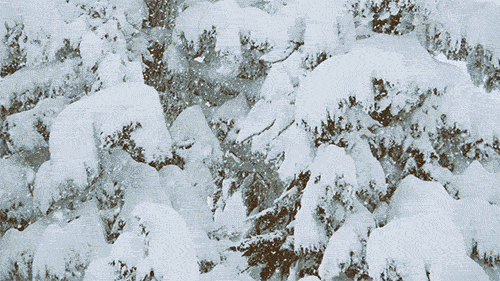
JANUARY
KALENDS
1st January
Origins: Ancient Greece/Rome
Observed by: Hellenic/Roman polytheists
Honouring Janus/Juno, first day of the Year. Kalends brought us the word 'calendar'.
ÞORRABLÓT (THORRABLÓT)
End of January/beginning of February
Origins: Iceland
Observed by: Heathens, Asatru
Midwinter Festival honouring Thor, usually by feasting and poetry.

FEBRUARY
IMBOLC
2nd February
Origins: Celtic polytheism /Ireland, as St. Brigid's Day
Observed by: Most neopagans, Wiccans, Druids, Asatru (as Charming of the Plow)
Imbolc is the most widely known and observed pagan holiday in the months of January and February. It falls at the beginning of spring/end of the winter for the Celtic peoples; marking the changing of the seasons, as most holidays do. St. Brigid is a Christianised form of or inspired by the Celtic fertility goddess Brigid who is celebrated on this day.
PARENTALIA
13th-21st February
Origins: Ancient Rome
Observed by: Greco-Roman polytheists
Translating to 'Ancestors Day', Parentalia is a nine-day celebration of deceased ancestors. Historically it was observed by feasting and making offerings and sacrifices to the dead and spirits of the underworld.
VÁLI'S BLOT
14th February
Origins: Old Norse
Observed by: Heathens, Asatru, Norse polytheists
Váli's Blot is considered by some Asatru to be the Norse equivalent of Valentine's Day but is widely acknowledged as a season changing festival. A day for marriage and celebrating with family and friends, and for remembrance of Váli, the son of Odin who defeated Höðr on this day.
LUPERCALIA
15th February
Origins: Ancient Rome
Observed by: Greco-Roman polytheists
Festival thought to honour a wolf who raised abandoned princes, celebrated originally by sacrificing goats to the gods, feasting, and, for fertility, nudity and fornication.
LESSER ELEUSINIAN MYSTERIES
17th-23rd February
Origins: Ancient Greece
Observed by: Hellenic polytheists
Initiation to the cult of Persephone and Demeter by sacrificing a pig. Prelude to Greater Mysteries, initiations held on these dates. Once completed, initiates could then move onto Greater Mysteries in the autumn.
ANTHESTERIA
27th February - 1st March 2021
Origins: Ancient Greece
Observed by: Hellenic polytheists
Athenian festivals dedicated to Dionysus and the dead. Held around the full moon in the month of Anthesterion, which in the Gregorian calendar this year roughly translates to 27th February.
THE DISTING/DÍSABLÓT
End of February/beginning of March
Origins: Uppsala, Sweden
Observed by: Heathens, Asatru, Norse polytheists
Celebration of Valkyries and other female spirits, called dísir. Sacrifices were made for a good harvest. Celebrated still by an annual market in Sweden.

MARCH
KALENDS
1st March
Origins: Ancient Greece/Rome
Observed by: Hellenic/Roman polytheists
Honouring the god Mars/Ares. Kalends brought us the word 'calendar'.
OSTARA/EARRACH
20th March
Origins: Anglo Saxon paganism, popularised as Ostara by Wicca
Observed by: Anglo Saxon Pagans, Wiccans, Neopagans, Druids (as Alba Eilir), Heathens (as Summer Finding), Ásatrú (as Sigrblót)
The northern hemisphere's vernal equinox, the word Ostara was introduced though Wicca and named for the goddess Eostre. Surprisingly unrelated to Easter in all but name, Ostara symbolises the beginning of spring. As a seasonal holiday it is widely celebrated by many different groups of pagans.
RAGNAR LODBROK'S DAY
28th March
Origins: Icelandic Sagas
Observed by: Ásatrú
Day of remembrance for Ragnar Lodbrok, Viking King of legend

APRIL
KALENDS/VENERALIA
1st April
Origins: Ancient Greece/Rome
Observed by: Hellenic/Roman polytheists
Celebration of the first of the month, this one honouring the goddess, Venus.
REMEMBRANCE FOR HAAKON SIGURDSSON
9th April
Origins: Norway, C9th
Observed by: Ásatrú
Day of remembrance for ruler of Norway who claimed lineage to Odin in the Icelandic Sagas.
WALPURGISNACHT
30th April
Origins: German Christianity, originally Saint Walpurga was known for banishing witches and other pests
Observed by: LaVeyan Satanists
Anton LaVey chose to celebrate this holiday as a follow up to the spring equinox and due to its past association with witchcraft.
HEXENNACHT (WITCHES' NIGHT)
30th April
Origins: German folklore, as Walpurgisnacht but witches were alleged to convene with the devil in this night
Observed by: Temple of Satan as 'a solemn holiday to honour those who were victimized by superstition'.

MAY
BEALTAINE/BELTANE
1st May
Origins: Celtic (Ireland/Scotland/Isle of Man)
Observed by: Wiccans, Neopagans, Celtic reconstructionist, Ásatrú/Heathens (as May Day)
One of the more well-known pagan festivals, Beltane is a festival of fire and the beginning of the summer. Also widely referred to as May Day, it is celebrated by lighting fires.
KALENDS
1st May
Origins: Ancient Greece/Rome
Observed by: Hellenic/Roman polytheists
Honouring the goddess Maia, for whom the month may have been named.
REMEMBRANCE FOR Guðröðr of Guðbrandsdál
9th May
Origins: C11 Norway, Icelandic Sagas
Observed by: Ásatrú, Norse, heathens
Guðröðr had his tongue removed by Óláfr for rebelling against violent conversion from Norse paganism to Christianity.

JUNE
KALENDS
1st June
Origins: Ancient Greece/Rome
Observed by: Hellenic/Roman polytheists
Anniversary of temples to Juno Moneta (protectress of money, her temple was where coins were made), Mars/Ares (God of war), and the Tempestates (goddesses of storms).
ARRHEPHORIA
3rd Skirophorion (translates to mid-June)
Origins: Ancient Greece
Observed by: Hellenic reconstructionist
Feast in celebration of Athena and fertility.
MIDSUMMER/SUMMER SOLSTICE
21st June
Origins: Agricultural holiday/longest day observed for centuries by many civilisations. Christianity can date to as early as C4th
Observed by: Wiccans/Germanic neopagans (as Litha), Asatru/Heathens, Druids (as Alban Hefin)
One of the main four holidays in the Wheel of the Year and popularised by Wiccans and neopagans as Litha which is taken from the Anglo-Saxon words for June/July, this is the longest day of the year and the middle point and sometimes considered the beginning of summer.

JULY
REMEMBRANCE FOR UNNR/AUD THE DEEP MINDED
9th July
Origins: C9th Iceland
Observed by: Ásatrú, Heathens, Norse reconstructionist
Aud was a traveller in the 9th century moving between Dublin, the Hebrides, Orkney, and finally Iceland following the deaths of her husband and son. This day is to honour her memory.
HERACLEIA
July/August
Origins: Ancient Greece
Observed by: Hellenic polytheists
Festival dedicated to Heracles the demigod and his death, involving feasting and celebration.

AUGUST
LUGHNASADH/LAMMAS
1st August
Origins: Celtic Britain (Ireland, Scotland, Isle of Man)
Observed by: Wiccans, Neopagans, Christians (as Lammas), Ásatrú (as Freyfaxi)
Named for the god Lugh, this festival is one of the Celtic harvest festivals and marks the beginning of the harvesting months. It was celebrated by climbing mountains, bull sacrifice, offerings, and feasting. Handfasting is commonplace with Wiccans in modern times.
REMEMBRANCE FOR REDBAD, KING OF THE FRISIANS
9th August
Origins: C7th Frisia (area of Germany/Netherlands)
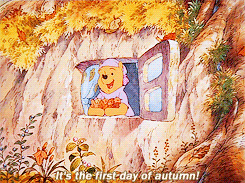
SEPTEMBER
NOUMENIA
8th September
Origins: Ancient Greece
Observed by: Hellenic polytheists
Celebration of new Hellenic lunar month. Offerings of honey and incense made to household deities.
REMEMBRANCE FOR HERMANN THE CHERUSCAN
9th September
Origins: C9th CE
Observed by: Heathens, Ásatrú
Hermann the Cheruscan, also known as Arminius of the Cherusci tribe, led the defeat against the Romans at the Battle of Teutoburg Forest and is lauded for saving Eastern Germanic peoples from being conquered by the Roman Empire.
AUTUMN EQUINOX (NORTHERN HEMISPHERE)
22nd September
Origins: 1970s neopaganism
Observed by: Wiccans and Neopagans (as Mabon), Ásatrú (as Winter Finding)
Named Mabon by prominent Wicca and Neopagan Aidan Kelly, after the Welsh mythological figure Mabon ap Moldron, the autumn equinox is one of the harvest festivals and marks the beginning of autumn in the northern hemisphere. Mabon is a relatively new pagan holiday not based on any specific historical festival, but traditionally people around the world would celebrate some kind of harvest festival around the end of September/beginning of October.
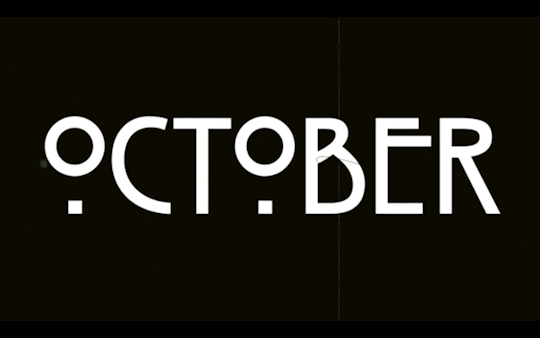
OCTOBER
PYANOPSIA
7th October
Origins: Ancient Greece
Observed by: Hellenic polytheists
Pyanopsia, or Pyanepsia, is a festival to honour Apollo, one of the most important deities, God of music, the sun, knowledge, healing, and archery - amongst other things. During the festival, two special offerings would be placed on doorways and carried to the temple. These offerings were a bean stew, and an olive branch wrapped in wool with honeys, pastries and seasonal fruits hanging from it.
REMEMBRANCE FOR LEIF EIRIKSSON
9th October
Origins: C10th CE
Observed by: Heathens, Ásatrú, Norse pagans
Remembrance for Leif and his sister Freydís Eiríksdóttir, children of Erik the Red, who are cited with being the first Norse explorers in North America.
THESMOPHORIA
12th-14th October
Origins: Ancient Greece
Observed by: Hellenic polytheists
Festival held in honour of Demeter Thesmophoros, goddess of agriculture, and her daughter Persephone, goddess of death and life, Queen of the Underworld. Celebrated primarily by women, this festival is linked with fertility, and we know very little about it due to its secretive rites. It is thought that it involved the sacrifice of pigs (although some sources say women), and abstinence.
REMEMBRANCE FOR ERIK THE RED
28th October
Origins: C9th CE
Observed by: Heathens, Ásatrú, Norse pagans
Erik the Red, probably named for the colour of his hair and beard, was the first permanent European settler in Greenland. His children were explorers too, who went to America, and although his wife converted to Christianity, Erik remained faithful to his Norse pagan gods.
SAMHAIN (HALLOWE'EN)
31st October-1st November
Origins: Gaelic - Scotland, Ireland, Isle of Man
Observed by: Celtic pagans, Neopagans, Wiccans
Pronounced SOW-in (sow rhyming with cow), Samhain was originally a harvest festival marking the beginning of winter. The day itself is the 1st November, but celebrations begin on October 31st, and this has become the accepted associated day. It's a festival of the dead, where the síthe, fae and spirits, can enter this realm from their own. Wiccans talk of a 'veil' thinning, meaning the boundary between worlds. Similar death related festivals around this time can be noted in other faiths from across the globe, and of course in the modern Hallowe'en.
WINTER NIGHTS (VETRNAETR), ÁLFABLÓT/DÍSABLÓT
31st October
Origins:
Celebrated by: Heathens, Ásatrú, Norse pagans
Winter Nights is mentioned in the Ynglinga Saga as one of the three greatest blessings of the year, the other two being Sigrblót in April, and þorrablót in late Jan/early Feb. Winter Nights is the celebration of the beginning of the winter season; Álfablót is a sacrifice to the elves, and Dísablót a sacrifice to the female spirits (dísir) and Valkyries.
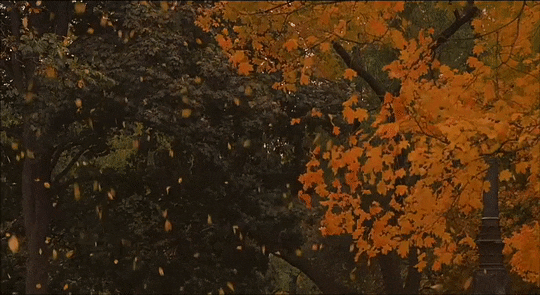
NOVEMBER
REMEMBRANCE FOR SIGRID THE HAUGHTY
9th November
Origins: C9th CE
Observed by: Heathens, Ásatrú, Norse pagans
It is not actually known whether Sigrid Storråda, or Sigrid the Haughty, was an actual historical figure, an amalgamation of a few, or simply a myth. The lore goes that she was proposed to multiple times and turned down many but went on to orchestrate conflict when a potential suitor - Olaf Tryggvason, King of Norway - attempted to convert her to Christianity.
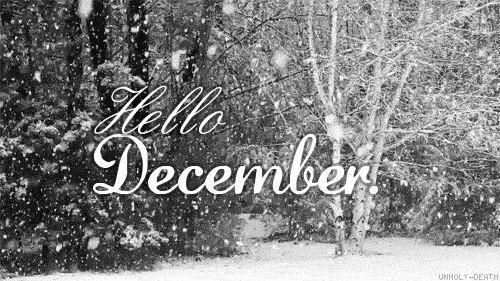
DECEMBER
REMEMBRANCE FOR EGILL SKALLAGRÍMSSON
9th December
Origins: C10th CE
Observed by: Heathens, Ásatrú, Norse pagans
Day celebrating the poet, farmer, and berserker Egill Skallagrímsson, who is recalled in The Icelandic Sagas by Snorri Sturluson. Egill is known for his many killings and escaping death by writing an epic poem after being captured when washing up on our Northumberland coastline.
SATURNALIA
17th - 23rd December
Origins: Ancient Rome
Observed by: Roman polytheists, some Hellenic
Like Yule and Lesser Dionysia, Saturnalia was the Roman winter festival celebrating the coming return of the sun and honouring the god Saturn. The standard feasting and drinking feature, and slaves would be treated as equals like Dionysia. Saturnalia is another festival cited as being picked up by Christians and used as inspiration for Christmas.
WINTER SOLSTICE (YULE/MIDWINTER)
21st December
Origins: Germanic nations, as early as C4th CE
Observed by: Norse pagans, Wiccans, Neopagans, LaVeyan Satanists, Ásatrú, Heathens, many Germanic nonpagan peoples
Yule is the midwinter festival known commonly among pagans as a time for feasting, being with loved ones, remembering ancestors, and looking forward to the return of the light and warmer days. Many pagans will celebrate Yule for more than one day, some celebrating a week either side, some for longer, up to two months, and some for twelve days afterwards. True Yule would have originally been in January for midwinter, but King Haakon the Good
moved it to coincide with the Christian celebrations in the 10th century, as told in the Ynglinga Saga.
On the 24th of December, Anglo Saxons are said to have celebrated 'Mothers Night' honouring female ancestors.
RURAL/LESSER DIONYSIA
End of December/beginning of January
Origins: Ancient Greece
Observed by: Hellenic polytheists
Smaller festival honouring the god Dionysus (Greater Dionysia took place in cities at the end of winter). Feasting, mask wearing to stop distinction between classes so that everyone could feel equal, sacrifices, parades, and phallic display were all used to celebrate.
#wheel of the year#wiccan#pagan#heathen#greek#mythology#holidays#religious holidays#pagan holidays#non-Abrahamic holidays#witch#witchcraft#witchblr#pagan wicca#polytheism#paganism#witches#witch holidays#witches holidays#pagan witch
26 notes
·
View notes